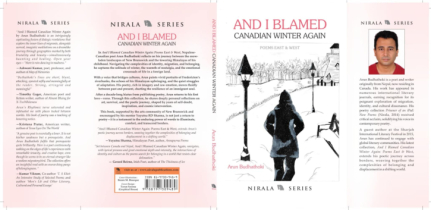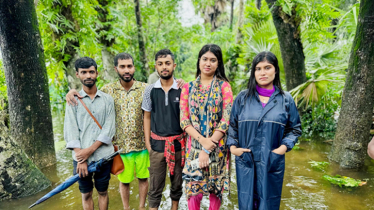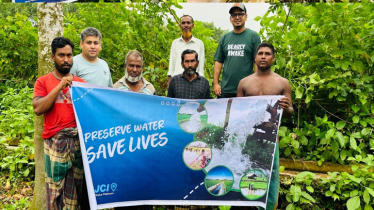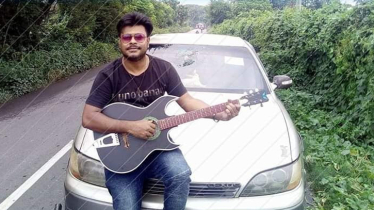
Photo: Courtesy
Abul Kalam, a farmer from Boarderhat area of Gopinathpur Union in Badarganj Upazila, Rangpur, was watering his field using a traditional ‘don-seuti’ (manual irrigation system) with his son. A little further away, another field was being watered using a solar-powered shallow machine. Abul Kalam Miah mentioned that he does not have enough money to buy solar panels. Without farming, he wouldn't be able to survive. Thus, he relies on the ‘don-seuti’ for irrigation.
‘I was told solar irrigation would reduce costs in the long run, but when you don’t have enough to get through the season, long-term savings mean little’, says Abul.
The upfront cost of a solar irrigation system ranges from 5,000 to 7,000 tk, far beyond the means of many farmers, even with government subsidies covering 30-40% of the cost.
However, some other farmers may have pumps that consume diesel. According to a 2023 BRRI study, 60% of small-scale farmers still rely on diesel pumps. Many lack accesses to affordable financing and technical support, leaving them trapped between rising fuel costs and the high initial investment required for solar technology. Experts warn that Bangladesh risks missing its target of installing 50,000 solar irrigation pumps by 2027 unless low-interest loans and expanded subsidies are provided.
Another one is Mariam Begum from Khulna. She shares her struggle with electricity despite having installed a solar home system. She said, ‘when there’s no sunlight for several days, we’re left without power. The panels only support basic appliances like lights and a fan.’
Bangladesh has installed more than 4.5 million solar home systems (SHS), providing electricity to 20 million people, primarily in rural areas. But 45% of households still report inadequate power supply, especially during the monsoon season. Many rural families also struggle with the financial burden of SHS. Though promoted as affordable, the monthly installment payments of 1,000 to 1500 tk are difficult to manage for households with seasonal incomes.
A 2022 IDCOL survey found that 30% of SHS users had defaulted on their payments due to income disruptions caused by climate-related disasters. Not only the troubles of Abul Kalam and Mariam Begum, Bangladesh has significant challenges in green transition though it made commendable strides in integrating the transition. The country is striving to reduce its carbon footprint, aiming to generate 40% of its energy from renewables by 2041.
The transition involves replacing fossil fuels with cleaner energy sources, promoting energy-efficient industries, and ensuring sustainable practices across sectors. On paper, these policies are promising, placing Bangladesh on the map as a climate-action champion. But beneath these achievements are the untold stories of individuals—farmers, factory workers, and rural families—grappling with the harsh realities of this transition.
The shift to a green economy is not just about installing solar panels or closing polluting factories. It touches lives, disrupts livelihoods, and demands sacrifices. People from different walks of life faces emotional and economic toll—and remind that without inclusive solutions, the green dream may come at too high to a human cost.
Small factories struggle with ‘green transition’
Bangladesh’s garment sector, which accounts for 84% of total exports and employs 4 million workers, faces increasing pressure from international buyers to adopt sustainable practices. While top-tier factories have invested in eco-friendly technologies, 80% of green investments come from the largest 10% of companies, leaving small and medium-sized factories struggling to comply with global standards.
Nazmun Nahar, a factory owner from Narayanganj, explains: ‘We’ve had to cut down operational costs to afford energy-efficient machinery and wastewater treatment systems.’ These measures have squeezed profit margins, forcing smaller factories to lay off workers or close altogether.
Workers can’t cope up
The government’s push to create 500,000 green jobs by 2030 through renewable energy projects. The garment transition has also led to job losses, as seen in the case of Amina Ahmed, who lost her job when a factory shut down after failing to meet new environmental standards.
Government retraining programs aimed at displaced workers have shown limited success, with only 30% of participants managing to secure green jobs, according to a 2022 survey by the Ministry of Labour. Amina completed training focused on renewable energy but still struggles to find work aligned with her skills in Dhaka.
Another one is Rajib Islam, a former shipyard worker from Chittagong who was trained as a solar panel installer through a government program. However, he quickly realized that 80% of the solar-related jobs were located in urban areas, far from his rural home.
‘There’s no demand for solar panel installers here,’ says Rajib. ‘I can’t afford to move to the city just for work.’ Rajib’s story reflects the broader issue of job creation being unevenly distributed across regions, leaving rural workers with few opportunities to apply their newly acquired skills.
A 2023 World Bank report found that only 45% of green job trainees are able to find work within their local communities, highlighting the need for region-specific job creation strategies to avoid unemployment among skilled workers.
Resistance from industries to comply with environmental regulations remains a significant barrier. In 2022, the government fined 30 factories for failing to adopt cleaner technologies. However, the fines were not enough to compel compliance, as many factories opted to downsize their workforce instead of upgrading equipment.
Farida Begum, a former cement factory worker in Sylhet, recalls the impact: ‘We were exposed to harmful chemicals every day, but the factory never invested in cleaner technologies. Eventually, they let most of us go to cover the fines.’ Farida’s case illustrates the health risks faced by workers in industries that resist green regulations.
According to a 2023 study by the Department of Public Health, workers in non-compliant factories are 50% more likely to suffer from respiratory illnesses, highlighting the urgent need for stricter enforcement of environmental laws and better protections for workers.
The Road Ahead: A Call for Inclusive Green Solutions
Bangladesh’s green journey is inspiring, but these stories reveal that ambition alone is not enough. The transition to sustainability must be inclusive, addressing the needs of those most affected by change—farmers, workers, and rural families. For workers displaced by the green transition, social safety nets also have proven inadequate. Karim Chowdhury, a former factory supervisor in Dhaka, received minimal unemployment benefits after his factory closed. ‘The benefits didn’t last long, and the retraining programs I tried to enroll in were full,’ Karim explains.
According to a 2022 government report, only 25% of displaced workers receive adequate unemployment benefits, while 60% of retraining programs are oversubscribed, leaving many workers without support.
Bangladesh Institute of Labor Studies Executive Director Syed Sultan Uddin Ahmmed underscored the essential nature of a just transition and urges government to take a comprehensive and forward-thinking strategy, including Scalable Retraining Programs, Proactive Workforce Planning, Inclusion of Vulnerable Groups. He said, ‘the green transition is not being JUST in Bangladesh. Just means that workers should not lose their jobs, but the transformation should still happen. This requires careful preparation and well-thought-out policies, which we lack.’
Sayed pointed out that current government programs for transitioning to a greener economy have barely touched on fairness, focusing more on industrial and factory-level concerns than on the workers themselves. “Any transformation needs to be planned to ensure that work and production continue seamlessly. Our policies are weak in this regard, and their implementation is even weaker,” he said.
According to Sayed, comprehensive policies that balance environmental objectives with job security are essential. “With proper preparation, it is possible to go green while safeguarding people's means of living.”
Bangladesh’s energy transition policy aims to phase out all coal-based power plants by 2040, with $2 billion committed to renewable energy projects. However, the construction of large coal plants like Rampal and Matarbari highlights a disconnect between policy goals and on-the-ground realities. Rural areas, where 70% of the population lives, still face energy access issues and limited opportunities to benefit from green technologies.
Energy expert from BUET, Professor Ijaz Hossain, highlighted the challenges in scaling renewable energy without strategic planning: "We speak of renewable energy, but have we studied its practicality? Do we have a solid plan? Many of the goals set for 2040 are unrealistic."
Pointing to issues in solar energy adoption, he remarked, "At one-point, solar installations were growing rapidly. However, high taxes on solar panels stifled this progress. To truly promote renewables, all solar-related items must be tax-free initially. Taxes can be introduced gradually once the sector stabilizes."
Professor Ahmed emphasized that renewable energy strategies must align with the country's economic realities. "Our approach should focus on what is feasible for our economy. Only after reaching a stable stage can we consider incrementally increasing tax burdens to align with global practices."
Adding to the discourse, he warned against the green transition disproportionately benefiting the wealthy: "The transition is ambitious, but unless it focuses on accessibility and affordability for the poorest communities, the benefits will remain concentrated among the wealthy."
He stressed the need for inclusive energy policies that prioritize low-income and rural populations, who often lack access to reliable energy. He also calls for a bottom-up approach echoes the broader sentiment for ensuring financial support, community involvement, and tailored solutions. Without such measures, experts caution, the transition risks deepening economic disparities and excluding the majority of Bangladesh’s citizens from its benefits.
What policy makers say Mohammad Saiful Islam, Secretary of the Ministry of Power, Energy and Mineral Resources, echoed the challenges associated with such a large-scale transformation. ‘We are now emphasizing renewable energy and have strong communication with investors,’ he said.
However, he acknowledged that energy planning is inherently a long-term process. ‘This can never be accomplished overnight,’ he added, suggesting that the complexity of renewable energy adoption requires both time and sustained effort.
Md. Munir Hossain Khan, Additional Secretary of the Ministry of Labour and Employment provided insights into how the labor market might evolve amid these changes. ‘We have to look at both sides. The transition will result in job losses for some while creating opportunities for others,’ he said.
He cited examples from other countries, mentioning that in the U.S., the introduction of AI technology could lead to 5 million job losses, but an equivalent number of new opportunities could also arise. ‘This is common with the advent of any new technology,’ Munir explained. He stressed that while some workers lose jobs, others will find employment that matches their skills in what he described as a ‘skill shift.’
‘The labor market will shift from one area to another. The government is planning for this so that displaced workers can find employment that aligns with their capabilities,’ he said.
These insights reveal a significant policy gap that Bangladesh must address to ensure its green ambitions do not come at the expense of the workforce. The call for stronger, worker-focused policies reflects a broader understanding that sustainable development must include the welfare of all its stakeholders. Comprehensive strategies that align job creation, skill development, and social support with environmental goals will be critical to ensuring that the green transition is both inclusive and effective.
Messenger/Tareq








